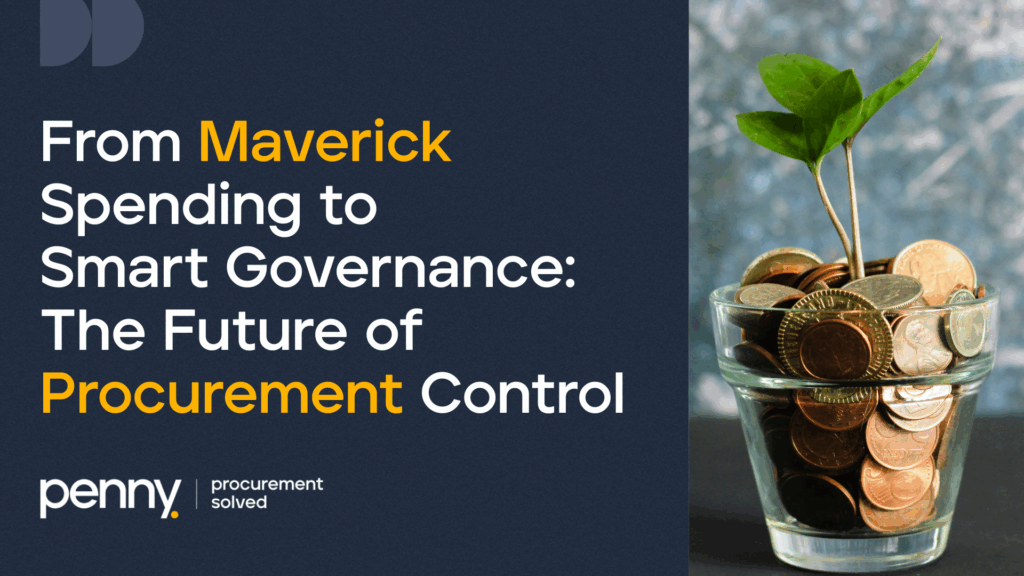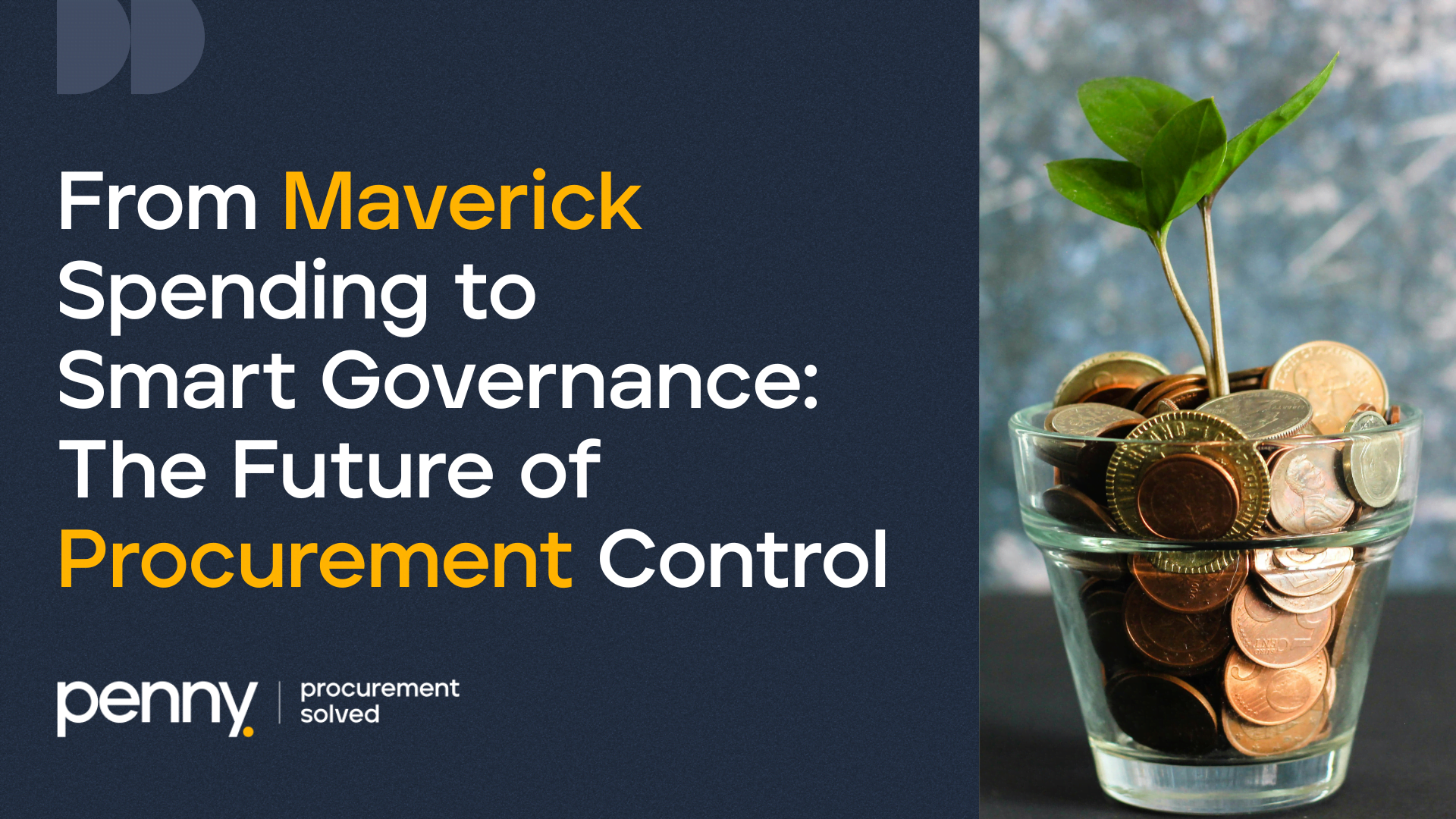
تواجه كل مؤسسة تحديًا مشتركًا: عمليات شراء تتم خارج السياسات المعتمدة، فواتير مفاجئة من إدارات لم تتبع الإجراءات، أو موردون تمت إضافتهم في اللحظة الأخيرة دون إشراك قسم المشتريات.
هذا هو الإنفاق العشوائي، وهو يستنزف ملايين الريالات من المؤسسات كل عام دون أن يُلاحظ.
التحدي لا يقتصر على منعه فحسب، بل في تحقيق ذلك دون خلق بيروقراطية تعيق سير العمل وتُحبط الموظفين.
وهنا تأتي الحلول الرقمية الحديثة للمشتريات – مثل بيني سوفتوير – لتُحدث التوازن بين التحكم والمرونة.
فهم الإنفاق العشوائي
يحدث الإنفاق العشوائي عندما يقوم الموظفون أو الإدارات بشراء سلع أو خدمات خارج عملية المشتريات المعتمدة.
وغالبًا ما يبدأ ذلك بنوايا حسنة؛ أحدهم يحتاج شيئًا بشكل عاجل، أو يشعر بأن النظام بطيء، أو يجد السياسة غير واضحة.
لكن هذه القرارات الصغيرة، عندما تتكرر مئات المرات، تؤدي إلى مشاكل كبيرة.
الإنفاق العشوائي يسبب:
- تكاليف غير مُتحكَّم بها وتجاوزات في الميزانية.
- ضياع فرص التوفير بسبب الشراء المجزأ.
- مخاطر في الامتثال والمراجعة الداخلية.
- تباين في جودة الموردين وأدائهم.
- صعوبة في التنبؤ المالي وإعداد التقارير.
ووفقًا لدراسة من إحدى شركات الاستشارات العالمية، يمكن أن يشكّل الإنفاق غير المُراقَب أو “خارج العقود” ما بين 10% إلى 20% من إجمالي مصروفات الشركات.
هذه ليست مجرد مسألة كفاءة، بل قضية حوكمة تؤثر مباشرة على الربحية.
لماذا تفشل الضوابط التقليدية
تحاول العديد من المؤسسات معالجة الإنفاق العشوائي عبر زيادة القواعد والنماذج والموافقات.
لكن النتيجة متوقعة: الموظفون يتجنبون النظام أكثر لأنه بطيء ومعقد.
أنظمة المشتريات التقليدية صُممت من أجل الامتثال، لا من أجل سهولة الاستخدام.
يجب على قادة المشتريات أن يدركوا أن الناس لا يتجنبون النظام لأنهم يرفضون الحوكمة، بل لأنهم يقدّرون السرعة والبساطة.
الحل الحقيقي ليس في فرض مزيد من القواعد، بل في تصميم نظام يجعل الامتثال هو الخيار الأسهل.
الحوكمة الذكية من خلال المشتريات الرقمية
المنصات الرقمية الحديثة للمشتريات تجعل الحوكمة غير مرئية. بدلاً من إرغام الموظفين على اتباع الإجراءات يدويًا، يتم تضمين الحوكمة داخل سير العمل نفسه.
هكذا تعمل الحوكمة الرقمية:
- يتم توجيه كل طلب شراء تلقائيًا إلى صاحب الصلاحية المناسب.
- يُراجع الطلب مقابل الميزانية والفئة في الوقت الفعلي.
- يتم توجيه اختيار الموردين من خلال قائمة الموردين المعتمدين.
- تُسجّل جميع المراسلات والموافقات والعروض تلقائيًا.
لم يعد الموظف بحاجة للقلق بشأن اتباعه للإجراء الصحيح، لأن الإجراء هو من يتبعه.
بهذا تتحول عملية الامتثال إلى جزء طبيعي من العمل اليومي، لا إلى خطوة إضافية.
4. تجربة المستخدم هي الأساس
تفشل أنظمة المشتريات عندما تُصمم لتناسب السياسة لا المستخدم.
وللقضاء على الإنفاق العشوائي، يجب أن تكون التجربة سهلة مثل إرسال بريد إلكتروني أو شراء عبر الإنترنت.
وهنا تتألق بيني. واجهة الاستخدام بسيطة وواضحة ومصممة لمستخدمي الأعمال، وليس فقط لمتخصصي المشتريات. يمكن للموظفين تقديم الطلبات، وإرفاق العروض، وتتبع الموافقات بكل سهولة.
عندما تكون الأنظمة سهلة الاستخدام، يزيد معدل التبنّي تلقائيًا، وتصبح الحوكمة نتيجة لتصميم ذكي.
5. الشفافية: أقوى وسيلة ردع
ينتعش الإنفاق العشوائي في الظلام. عندما تكون المشتريات غير مرئية، تختفي المساءلة، ومع غياب المساءلة يتلاشى الامتثال.
الشفافية تغيّر كل شيء.
المنصة المركزية للمشتريات تمنح فرق المالية والمشتريات رؤية فورية لجميع المصروفات عبر الإدارات.
كل طلب شراء وأمر شراء وفاتورة يصبح قابلاً للتتبع.
وعندما يعلم الأفراد أن مشترياتهم مرئية، يتغير السلوك. فالشفافية تولّد المسؤولية، والمسؤولية تولّد الحوكمة.
توفر لوحات التحكم في بيني رؤية لحظية تمنح القادة تحكمًا كاملاً في من ينفق، وعلى ماذا، ولماذا لتأسيس ثقافة قائمة على الشفافية والمساءلة.
6. الموافقات التي تُمكّن لا تُعطّل
أحد الأسباب الرئيسية لتجاوز الأنظمة هو بطء دورة الموافقات.
تُعالج المشتريات 2.0 هذا الأمر بتحويل الموافقات إلى سير عمل فوري.
بدلاً من ملاحقة المديرين للحصول على التواقيع، يُرسل النظام إشعارات تلقائية، ويتيح الموافقة بنقرة واحدة، ويسجل كل قرار فورًا.
مع بيني، تستغرق الموافقات دقائق لا أيام.
وهذا يعني أنه لم يعد هناك سبب لتجاوز الإجراءات، ولا احتكاك بين السرعة والحوكمة.
الأتمتة تجعل الامتثال لا يبدو بيروقراطيًا بعد الآن.
7. تطبيق السياسات بالتحليل والذكاء
في السابق، كان تطبيق سياسات المشتريات يتطلب تدقيقًا يدويًا ومراجعات مفاجئة.
اليوم، التحليلات والذكاء الاصطناعي جعلت العملية مستمرة واستباقية.
تُميز الأنظمة الحديثة الأنماط غير المعتادة في الإنفاق، أو الطلبات المكررة، أو المشتريات من خارج قوائم الموردين المفضلين تلقائيًا.
بل ويمكنها كشف الموظفين الذين يكررون الطلبات غير المتوافقة وتنبيه المدراء في الوقت الفعلي.
هذا التطبيق القائم على البيانات يضمن أن الحوكمة تتطور مع العمل، وتتكيّف مع المخاطر والفئات الجديدة.
في بيني، يستخدم عملاؤنا التحليلات لتحديد أماكن التسرب، وقياس معدلات الامتثال، وتحسين انضباط المشتريات دون الحاجة إلى رقابة يدوية.
8. الحوكمة بدون بيروقراطية: نهج بيني
نحن في بيني نؤمن أن الحوكمة الجيدة لا تُبطئ الفرق، بل تُسرّعها عبر إزالة الغموض والمخاطر.
منصتنا تقوم على ثلاثة مبادئ أساسية:
- اجعل الامتثال سهلاً من خلال الأتمتة وسير العمل الذكي.
- اجعل الرؤية شاملة عبر البيانات الموحدة والتقارير الفورية.
- اجعل تجربة المستخدم بديهية بحيث يُفضّل الموظفون استخدام النظام طواعية.
النتيجة هي ثقافة مشتريات يسودها الامتثال التلقائي، والحوكمة السلسة، واختفاء الإنفاق العشوائي تدريجيًا.
9. التحول الثقافي: من السيطرة إلى التمكين
الرقابة الحديثة على المشتريات لم تعد تتعلق بالتحكم، بل بالتمكين.
ففرق المشتريات التي تعمل كـ"حراس بوابة" تبطئ الابتكار.
أما الفرق التي تعمل كممكّنين، فهي تقود الكفاءة والنتائج.
الفرق بينهما يعتمد على كيفية تصميم الأنظمة وتواصلها مع المستخدمين.
عندما يتم تقديم الحوكمة كوسيلة دعم وليست تقييدًا، يشعر الموظفون بأنهم مسانَدون لا مُراقَبون.
ويبدؤون في النظر إلى المشتريات كشريك لتحقيق الأهداف، لا كعقبة أمامها.
تساعد بيني المؤسسات على تحقيق هذا التحول الثقافي من خلال جعل حوكمة المشتريات مسؤولية مشتركة بدلاً من قيد مركزي.
الخلاصة
الإنفاق العشوائي ليس مشكلة برمجية، بل مشكلة تصميم نظام.
القضاء عليه يتطلب إنشاء أنظمة سهلة الاستخدام، شفافة، وذكية تجعل الامتثال هو النمط الطبيعي للعمل.
المرونة والحوكمة ليستا ضدين، بل شريكين عندما تدعمهما التقنية المناسبة.
والمستقبل سيكون للمؤسسات التي تفهم هذا التوازن.
احجز عرضًا توضيحيًا مخصصًا اليوم واكتشف كيف تساعدك بيني سوفتوير على فرض الحوكمة دون بيروقراطية، وتحويل التحكم إلى تعاون.


